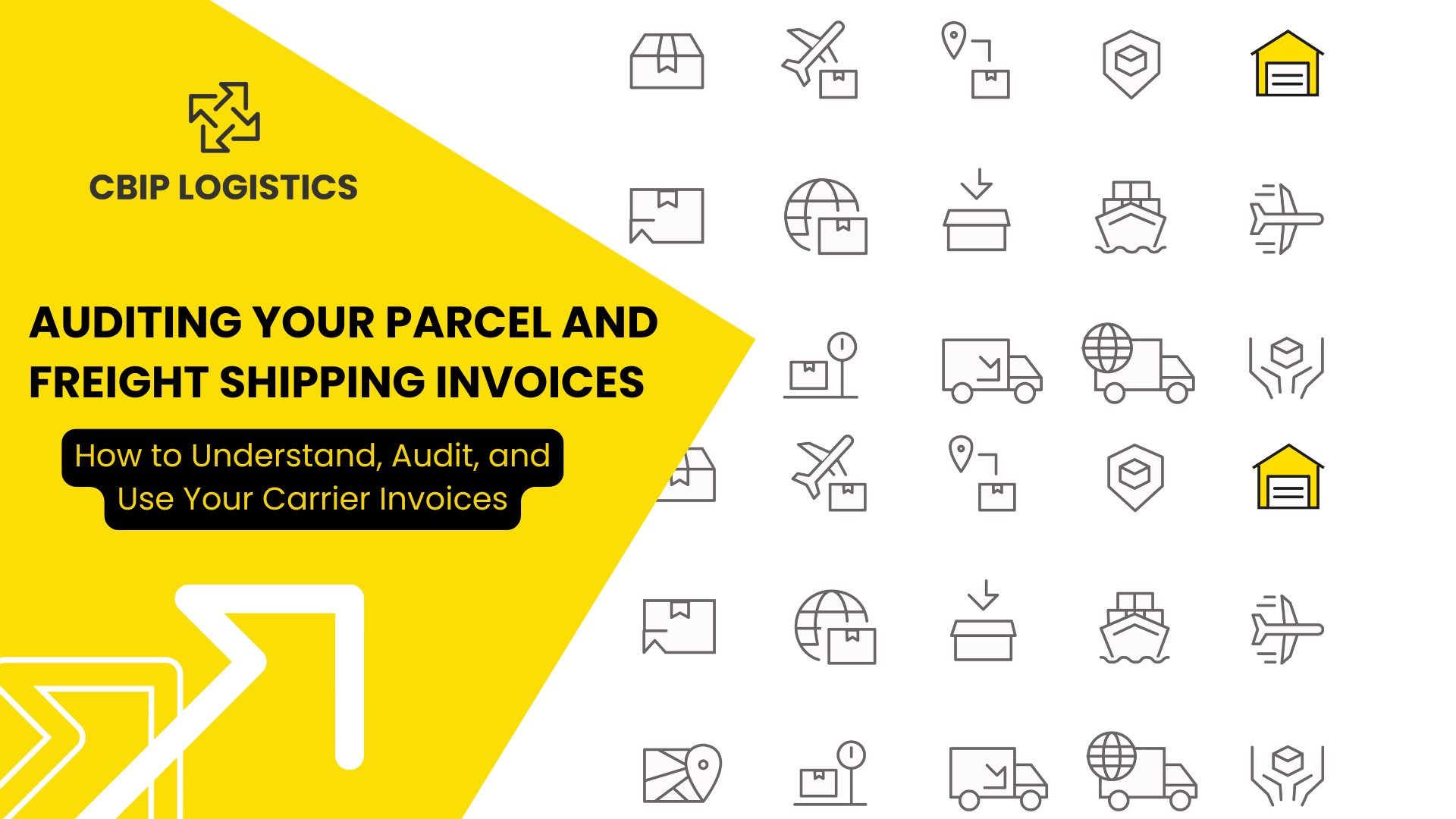Auditing Your Parcel & Freight Shipping Invoices

As a growing e-commerce business, you may have to handle several carrier invoices. Between freight invoices and parcel invoices, it takes a lot of work to understand what is going on.
However, it is important to read and understand your carrier invoices well enough to look out for problems.
Why? Well, your carrier invoices aren’t always perfect. In fact, some estimates show that as many as 80 percent of carrier invoices have issues and or discrepancies.
There are a few important actions you can take pertaining to your carrier invoices that can help your business thrive. Ideally, you want to audit for mistakes and price spikes, collect data for your own accounting and storage, and automate key tasks to make things easier for future-you.
First, you need to understand what you are looking at.
Read About CBIP’s Global 4PL Logistics Services
What's on a shipping invoice?
There are two main types of carrier invoices that e-commerce brands have to deal with: the parcel invoice and the freight invoice.
The two invoices are doing similar things, they are listing out what is in the shipment, what associated fees are, and other details needed to ID the shipment.
Here’s what info you’ll find on each.
Parcel invoice
Parcel invoices include the names of the shipper and receiver, date of shipment, service level, and zones.
They will likely also include info on the goods shipped, such as the materials, weight, and dimensions, plus a list of handling fees and surcharges, namely
- Fuel surcharge
- Delivery area surcharge
- Residential surcharge
- Single shipment fee
- Multilot shipment
Freight Invoice
Typically a freight invoice includes consignor and consignee names and contact info, date of shipment, origin and destination, quantity, and description of the freight.
Like the parcel invoice, the freight invoice also includes a section outlining special features required for the shipment, as well as fees and surcharges.
Audit your carrier invoices
An incorrect invoice may have you overpaying for services, so audit for mistakes and areas where you are overspending. In particular, you should look at anomalous spending spikes, errors, and unexpected fees.
In addition, there may be instances where your carrier contractually owes you money. For instance, many carrier contracts stipulate that if items are delivered late or above-contracted rates, you are technically able to claim payment for those mistakes.
How to check for errors:
You’ll need to do an audit, which can be done manually, with an auditing software, or through a third party. It’s tedious to go through this info manually, so if you don’t want to hire a third party to audit, most recommend getting an auditing software.
Related: Understanding Carrier Shipping Rates and Negotiating Rate Discounts
Collect and store invoice data
If you aren’t collecting and using data to improve cost efficiency and marketing efforts, it's time to start.
E-commerce retail is a competitive game, and now more than ever, you need to use all the tools at your disposal to be competitive. Collecting and analyzing data from carrier invoices allows you to keep a detailed account of your spending, plus helps you identify trends and areas to optimize.
The tough part is that every carrier uses slightly different formats, and depending on the number of carriers you use, you could be dealing with several different formats. This makes storing data in an in-house system complicated.
If you struggle to store and analyze data from various invoice formats, you might employ the ETL process, wherein you
- E - Extract data from the source location, such as an invoice file.
- T - Transform the extracted data into a format that suits your purposes. This involves cleaning and manipulating the data in various ways.
- L - Load the transformed data into your designated location, such as a data warehouse
For the ETL process, you will need a solid understanding of data analytics. If you don’t have that, you will need to hire a data analyst or work with a third-party provider who can handle data capture and data analytics for you.
Automate invoicing
If possible, work with carriers who use paperless & automated invoicing processes. Having your invoice automatically show up in a portal with all the info you need makes it much easier to clean and input data for your own records.
Plus, an automated invoicing system will automatically scan itself for issues, making your audit process less difficult.
Work with a 4PL that can consolidate all your data in one place
As a growing DTC brand, you are likely working with several different carriers for parcel and freight shipping. That means you have to juggle multiple parcel and freight invoices, all coming in at different dates, on different billing cycles, and written in different formats.
Managing all those moving parts makes your day-to-day a headache, and it makes effective cost analysis extremely challenging.
Instead of doing it all yourself, work with us. At CBIP, we designed our own custom platform where all your logistics data, all your bills, and all your tracking can be found. That way, you only have to worry about one invoice every month: Ours.
Curious about how we can help you consolidate your logistics and get invoices under control? Get in contact today for a free consultation.






